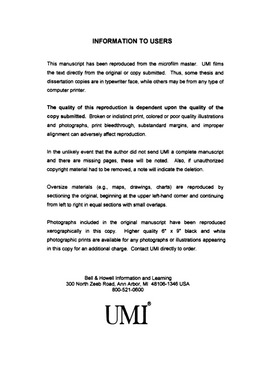| dc.contributor.advisor | Straka, Jerry M., | en_US |
| dc.contributor.author | Markowski, Paul Michael. | en_US |
| dc.date.accessioned | 2013-08-16T12:31:09Z | |
| dc.date.available | 2013-08-16T12:31:09Z | |
| dc.date.issued | 2000 | en_US |
| dc.identifier.uri | https://hdl.handle.net/11244/6030 | |
| dc.description.abstract | Since its first documentation in 1953, the "hook echo" has been perhaps the best-recognized radar feature of supercell storms. Hook echoes have been associated with a region of subsiding air to the rear of both tornadic and non-tornadic supercells. Today this feature usually is referred to as the "rear-flank downdraft" (RFD). For over twenty years, the RFD has been hypothesized to play an important role in the final concentration of vorticity at the surface that gives rise to tornadoes. | en_US |
| dc.description.abstract | Evidence is presented that evaporative cooling and entrainment of midlevel potentially cold air play a smaller or negligible role in the forcing of RFDs associated with tornadic supercells compared to non-tornadic supercells. Tornadogenesis is more likely and tornado intensity and longevity increase as the surface buoyancy, potential buoyancy, and equivalent potential temperature in the RFD increase, and as the convective inhibition associated with RFD parcels at the surface decreases. Furthermore, baroclinity at the surface within the hook echo is not a necessary condition for tornadogenesis. It also will be shown that environments characterized by high boundary layer relative humidity (and low cloud base) are more conducive to RFDs associated with relatively high buoyancy than environments characterized by low boundary layer relative humidity (and high cloud base). | en_US |
| dc.description.abstract | Despite the long-surmised importance of the hook echo and RFD in tornadogenesis, only a scarce few direct observations have been obtained at the surface within hook echoes and RFDs. In this dissertation, in situ surface observations within hook echoes and RFDs are analyzed. These "mobile mesonet" data have unprecedented horizontal spatial resolution, and were obtained from the Verifications of the Origins of Rotation in Tornadoes Experiment (VORTEX) and additional field experiments conducted since the conclusion of VORTEX. The surface thermodynamic characteristics of hook echoes and RFDs associated with tornadic and non-tornadic supercells are investigated to address whether certain types of hook echoes and RFDs are favorable (or unfavorable) for tornadogenesis. | en_US |
| dc.format.extent | xiv, 217 leaves : | en_US |
| dc.subject | Storms. | en_US |
| dc.subject | Tornadoes. | en_US |
| dc.subject | Microbursts. | en_US |
| dc.subject | Physics, Atmospheric Science. | en_US |
| dc.title | Surface thermodynamic characteristics of hook echoes and rear-flank downdrafts, with implications for tornado genesis and maintenance. | en_US |
| dc.type | Thesis | en_US |
| dc.thesis.degree | Ph.D. | en_US |
| dc.thesis.degreeDiscipline | School of Meteorology | en_US |
| dc.note | Adviser: Jerry M. Straka. | en_US |
| dc.note | Source: Dissertation Abstracts International, Volume: 61-09, Section: B, page: 4779. | en_US |
| ou.identifier | (UMI)AAI9988306 | en_US |
| ou.group | College of Atmospheric & Geographic Sciences::School of Meteorology | |
